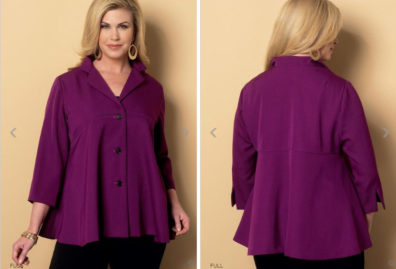
In anticipation of receiving your brochure of classes in the mail, here are a few tips to prepare you for online registration or, if you prefer, to mail in your class choices. Whether this is your very first Expo (welcome!) or your 34th, we hope you find the tips helpful.
Here are the types of learning experiences you can sign up for. Pre-registration is recommended for the hands-on classes.
One Needle – 45 minutes long and presented in a lecture/demo format.
Two Needle – 1.5 hour long classes offered. This year, we are offering a selection of hands-on project classes in addition to our traditional 90 minute lecture/demo classes. Additional supplies may be needed and kit fees are paid directly to the teacher on the day of class.
Three Needle – 2.5 hour long classes, hands on experiences with or without machines. Additional supplies may be needed and kit fees are paid directly to the teacher on the day of class.
Four Needle – 4 hour long classes only offered on Wednesday, February 28. You have your choice of taking a class using machines or a class that doesn’t require any equipment. And, thanks to our generous sewing machine dealers, machines are provided to use while in the classroom. Additional supplies may be needed and kit fees are paid directly to the teacher on the day of class.
As you browse your brochure and begin planning your Expo schedule, we recommend that you:
- Highlight the classes that you are interested in and plan out your desired schedule. We highly recommend that you have a schedule planned before getting online to purchase tickets. You may want to have back-up selections as well in case you encounter a sold out class.
- Check with friends to see what classes they are interested in.
- Use the registration form on the back of the brochure to keep yourself organized.
- List the class numbers with the alphabet. For example, 1803 is a class that is offered on A=Thursday, B=Friday, C=Saturday, and D=Sunday.
- Leave time between classes to have a snack and/or have lunch. For safety reasons, food is not allowed in the classrooms.
- Leave time to shop and visit!
Now that you are prepared and have your time at Expo planned, here are some helpful tips for purchasing your tickets online:
- Opening of the ticket office will be announced soon. Stay tuned.
- Have the class number, day, and time on hand.
- CORRECTION: You will NOT need your username and password if you are a returning customer.
- Utilize the search bar at the top of the ticketing page to navigate to the classes you want. This year you can search by class number, teacher name, and class title to find exactly what you need!
- Click on the class picture to open the full class details.
- Be sure to have your credit card ready (The Expo gladly accepts Visa and MasterCard only). Orders may time out if left unattended too long.
- You can check out related classes at the bottom of the page for other great class suggestions!
Once tickets are purchased online, you will receive an email confirmation of your order, tickets will be processed, and you will receive another email confirming shipment of your order. This process may take up to 3 weeks.
We are looking forward to a wonderful 2018 Expo and want to wish everyone a very happy holiday season!
Please Note: Our office will be closed December 23 , 2017 through January 1, 2018.















